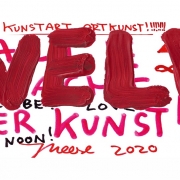- Why the “Internet of Things” should be part of the marketing plan - 20. February 2018
- Jobs for first and fast movers or: Why it’s worth working in a digital agency - 8. February 2018
- Smartphone on wheels - 15. September 2017
- 2016/2017: From the winds of change to the storm of transformation - 19. December 2016
- Facebook Messenger chatbots: a communication channel for brands? - 14. November 2016
- The Opportunities of Digitisation - 10. October 2016
- Successfully understand and use virtual reality - 25. May 2016
Many questions will be raised when carmakers present their solutions and concepts for mobility of the future at IAA in Frankfurt in just a few days’ time: What do we do in the car if the car can soon drive itself? If the dashboard and side windows consist of screens in future, which contents do we use during the journey? What data does a fully connected vehicle supply and who uses it for what purpose? Manfred Klaus believes that achieving reduced emissions is just one aspect of what the car of the future will have to deliver. Writing in a guest article, the Plan.Net boss sees cars becoming their own communication platform in future – with new business models.
It is a mere coincidence that elections to the next German Bundestag are taking place on the final day of this year’s International Motor Show (IAA) in Frankfurt (24 September 2017). Fitting at the same time however, since Germany’s motorists suddenly find themselves in the middle of the election campaign. The debate revolving around banning diesel vehicles, electric mobility, software updates and hardware retrofits is dominating the media as well as political discussions.
There is no question but that the emissions from private vehicles are a key issue for the public at large – especially in the larger cities. Yet electric mobility is currently lacking the infrastructure and the reach to seamlessly replace the combustion engine on a grand scale. The same applies for the topic of autonomous driving. Just because studies indicate success, failure would still be the result in mass operation at present. As soon as the discussion on the diesel front becomes de-emotionalised, a different topic will raise its head for carmakers: with progressive vehicle digitisation and connectivity, the cars themselves will increasingly evolve into independent communication platforms – so a type of smartphone on wheels.
Many aspects of this development are grouped presently under the catch phrase “connected car”, which essentially encompasses three main feature areas. Firstly “general features” such as seamless Internet connection, WLAN hotspot in the vehicle or personal driver registration. Then there are the “vehicle-related features”, which include information on the vehicle condition, its position or additional on-demand features (brighter headlights, 4-wheel drive, and such like). Finally the “infotainment and entertainment features” provide real-time information on traffic as well as location-based services and content offers. Digital technologies can therefore already be found today in an entire range of car features – even aside from autonomous driving.
It’s just that most Germans have barely noticed it yet. Digital features have been advertised slightly cautiously to date by the manufacturers. According to a study on behalf of Motor Presse Stuttgart, only ten percent of Germans are acquainted with the terms “connected car” or “connectivity”. And even among Generation Y, the key target group for connected car offers, only one in every two is familiar with the term according to Deloitte. To add to this, the terms are also interpreted completely differently by motorists: from automatic parking assistance to the emergency call feature through to WLAN hotspot or a music playlist on the driver’s smartphone.
Initial studies by manufacturers, as demonstrated at the Consumer Electronic Show (CES) in Las Vegas, illustrate what could be conceivable in the near future: smart windscreens that offer more than just a pure head-up display, dashboards that simply consist of touchscreens and on which key features are processed like in apps or side windows that can be used via touchscreen to surf the Internet or call up apps. And when it comes to defensive driving, apps already exist in abundance. The latest offer however rebukes young people in an unusual way: if the novice driver exceeds the specified maximum speed limit, the app plays their parents’ favourite music. Now that should be punishment enough for most!
This page is available in DE





